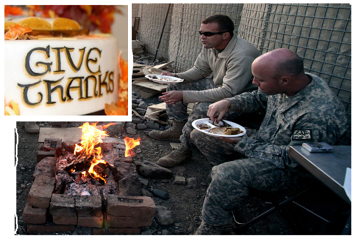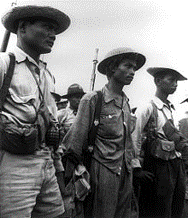VP’s Corner
Jeff Fuller
WB6UIE

The approaching holiday season and year’s end are traditionally a time for reflection and
giving thanks for our many blessings. This Veteran’s Day, lets take a moment to express thanks to our veterans – the young ones who are in harm’s way today defending our freedoms, and those who have gone before, sometimes giving all.
In honor of Veteran’s Day, here’s an account of some brave WWII vets who put their electronic knowledge and amateur radio skills to work in an amazing example of extreme homebrew. It begins in 1941 with Wendell Fertig, a recent college graduate on his first job as a mining engineer in the Philippines. Having earned an Army Reserve commission through ROTC, Fertig soon found himself called to active duty as war clouds darkened in the Pacific. Within months Japan attacked Pearl Harbor, followed shortly afterward by an invasion of the Philippines.
American and Filipino forces fought bravely, trying to hold out

Their rapid evacuation left Fertig’s group on the southern island of Mindanao with little equipment and no radio communications. He needed a way to link up with other resistance groups and to contact General MacArthur’s headquarters. Fertig was not a ham, but was able to use his engineering knowledge together with that of several Filipino tech school grads and radio amateurs to put together a working HF station. They did so by scrounging parts from old broadcast receivers and a broken projector and attempting to duplicate a schematic from a correspondence school textbook. (How many of us could do something like that today …?) After much tinkering, they managed CW contact with a Navy station on the U.S. west coast. [1]
Navy operators at first ignored Fertig’s messages, thinking he must be a Japanese deception. After finally authenticating him from family info in the States, contact was arranged with MacArthur’s headquarters in Australia. They assigned Fertig command of Philippine resistance forces on Mindinao and began covert supply via submarine. Fertig’s radio network soon spanned the major islands and was a regular source of intel for U.S. forces planning their invasion.
1. Schmidt, Larry. “American Involvement in the Filipino Resistance Movement on Mindinao …” Master’s thesis, U.S. Army Command and General Staff College, 1982.
2. https://en.wikipedia.org/wiki/Philippine_resistance_against_Japan#/media/File:Pajota%27s_Guerrillas.jpg
73,
Jeff WB6UIE